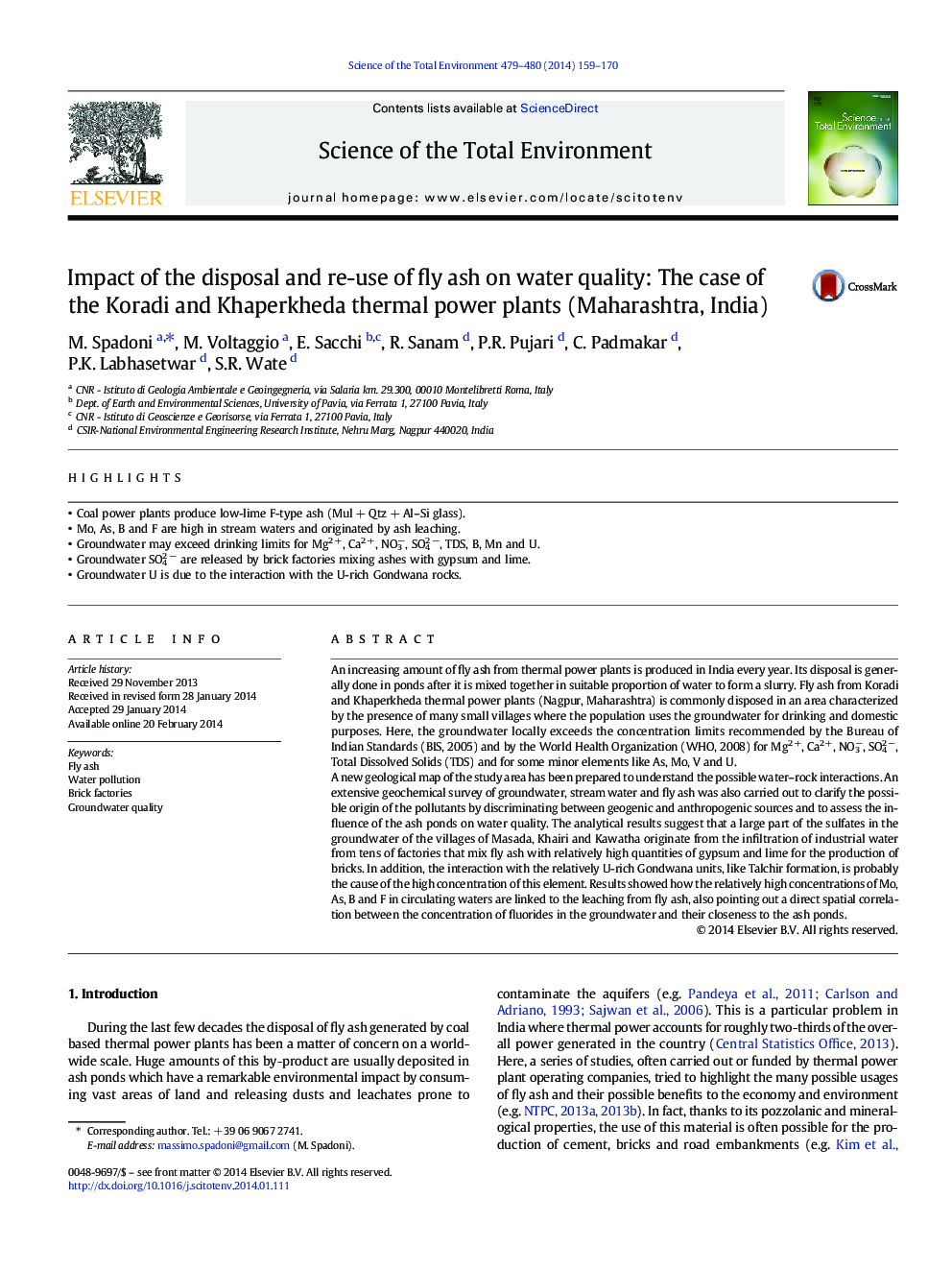| Article ID | Journal | Published Year | Pages | File Type |
|---|---|---|---|---|
| 6330985 | Science of The Total Environment | 2014 | 12 Pages |
Abstract
A new geological map of the study area has been prepared to understand the possible water-rock interactions. An extensive geochemical survey of groundwater, stream water and fly ash was also carried out to clarify the possible origin of the pollutants by discriminating between geogenic and anthropogenic sources and to assess the influence of the ash ponds on water quality. The analytical results suggest that a large part of the sulfates in the groundwater of the villages of Masada, Khairi and Kawatha originate from the infiltration of industrial water from tens of factories that mix fly ash with relatively high quantities of gypsum and lime for the production of bricks. In addition, the interaction with the relatively U-rich Gondwana units, like Talchir formation, is probably the cause of the high concentration of this element. Results showed how the relatively high concentrations of Mo, As, B and F in circulating waters are linked to the leaching from fly ash, also pointing out a direct spatial correlation between the concentration of fluorides in the groundwater and their closeness to the ash ponds.
Related Topics
Life Sciences
Environmental Science
Environmental Chemistry
Authors
M. Spadoni, M. Voltaggio, E. Sacchi, R. Sanam, P.R. Pujari, C. Padmakar, P.K. Labhasetwar, S.R. Wate,
